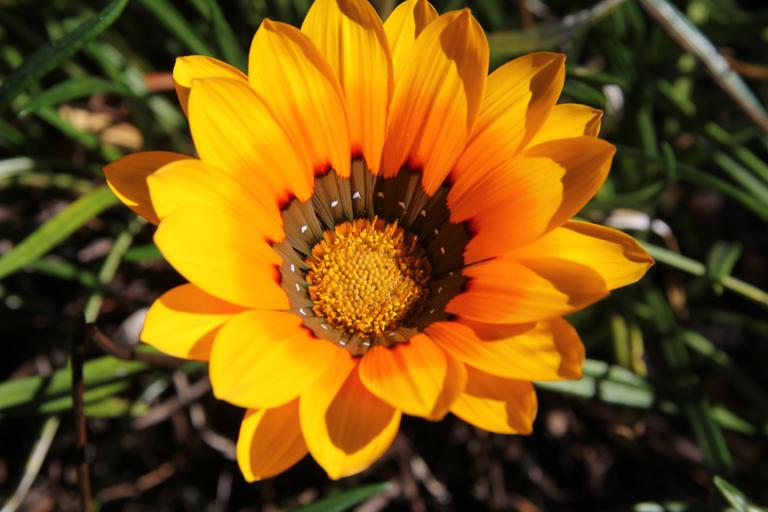MAKE A MEME
View Large Image

| View Original: | Gazania_krebsiana.jpg (5184x3456) | |||
| Download: | Original | Medium | Small | Thumb |
| Courtesy of: | www.flickr.com | More Like This | ||
| Keywords: outdoor flower plant Gazania krebsiana Less. is one of some 19 species of Gazania that are exclusively African and predominantly South African - only Gazania krebsiana subsp. serrulata (DC.) Roessler ventures northwards from the Transvaal into Tanzania. This ground-hugging grassland species is one of the first plants to flower in spring, appearing in profusion as small clumps of yellow or white flowers between low grass tussocks or burnt stubble, or as leafless single flowers seemingly stuck into the soil. Flowering lasts for only a few weeks after the first rains. The buttercup-yellow rays often occur in forms having dark spots at the base. The showy flowers open only in strong sunlight, closing with fading light and re-opening the following day. This plant is perennial and grows from a woody rootstock. The leaves are tufted and linear in shape, white-felted on the underside, and exuding a milky latex when damaged. First described by Christian Friedrich Lessing in 1832, 3 subspecies are recognised: G. krebsiana subsp. arctotoides, G. krebsiana subsp. krebsiana and G. krebsiana subsp. serrulata. The Biedouwvallei and Pakhuis Pass in the Cape present striking displays of blood-red G. krebsiana subsp. arctotoides after good autumn rains, this subspecies occurring widely through the Cape, Free State, Natal, Lesotho, and in Namibia. Gazanias have become popular garden subjects, especially in Europe because of their hardiness, and horticultural breeding has led to numerous cultivars with large flower-heads and a variety of colours. Decoctions and infusions of the plant are used as analgesics (pain relief) by Bantu tribes. en.wikipedia.org/wiki/Gazania_krebsiana Gazania krebsiana Less. is one of some 19 species of Gazania that are exclusively African and predominantly South African - only Gazania krebsiana subsp. serrulata (DC.) Roessler ventures northwards from the Transvaal into Tanzania. This ground-hugging grassland species is one of the first plants to flower in spring, appearing in profusion as small clumps of yellow or white flowers between low grass tussocks or burnt stubble, or as leafless single flowers seemingly stuck into the soil. Flowering lasts for only a few weeks after the first rains. The buttercup-yellow rays often occur in forms having dark spots at the base. The showy flowers open only in strong sunlight, closing with fading light and re-opening the following day. This plant is perennial and grows from a woody rootstock. The leaves are tufted and linear in shape, white-felted on the underside, and exuding a milky latex when damaged. First described by Christian Friedrich Lessing in 1832, 3 subspecies are recognised: G. krebsiana subsp. arctotoides, G. krebsiana subsp. krebsiana and G. krebsiana subsp. serrulata. The Biedouwvallei and Pakhuis Pass in the Cape present striking displays of blood-red G. krebsiana subsp. arctotoides after good autumn rains, this subspecies occurring widely through the Cape, Free State, Natal, Lesotho, and in Namibia. Gazanias have become popular garden subjects, especially in Europe because of their hardiness, and horticultural breeding has led to numerous cultivars with large flower-heads and a variety of colours. Decoctions and infusions of the plant are used as analgesics (pain relief) by Bantu tribes. en.wikipedia.org/wiki/Gazania_krebsiana | ||||